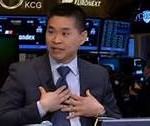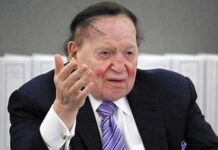As the hot discussion about high frequency trading (HFT) enters the public spotlight thanks to the recent 60 Minutes story and the book by Michael Lewis, it’s important to note that trading in front of individual investors and other conflicts-of-interest have existed in various forms since the start of trading in the U.S.

Front-running of public and institutional customer orders has existed to greater degrees as more investors have entered $23 trillion stock and multi-trillion futures markets and as the opportunities to gain an advantage (“get the edge” in trading terminology) has become even more profitable. Today, it is estimated that HFC now accounts for 50% of the share volume in U.S exchanges.
Yet from a historical perspective, it is clear that past advances in the capital markets that involved the creation of new strategies (arbitrage) or products (ETFs, stock index futures), and how and where financial instruments were traded, have been replaced by technology. Today, the technology de jour is HFT, but it still seeks the old advantage against public customers.
What continues to drive front-running in all of its various incarnations over the past decades, especially since the 1970s and the increasing institutionalization of the markets have been two simple facts:
- Front-running is essentially a riskless form of trading (except in the unlikely event of being caught by regulators or the exchanges.) As risk has become greater and more costly, it now pays for HFT to invest:
- Trading in front of customers has traditionally been considered a benefit of being a member of a stock or futures exchange, which have been self-regulatory agencies for decades. This meant that any time front-running was discovered by the exchange’s internal floor surveillance departments, it was reported to an internal floor committee comprised of other exchange members. (Note: stock and futures exchanges went public beginning in 2006 with the NYSE and the Chicago Mercantile Exchange) As exchanges went public, they have raised their surveillance and enforcement levels.) In some cases, fines or other sanctions were imposed largely based on the size of the order, who committed the front-running (and their internal political clout) and who was the aggrieved and unsuspecting investor. The member-owned exchanges (stock and futures) had committees comprised of other members, so political clout played a role in who was fined and how much.
Same Abuse, New Technology
As early as the mid-1970s, as pension and mutual funds and other large corporate investors entered the stock markets as assets increased, institutional investors had privately complained that their orders were being victimized by specialists. This familiar complaint did not become public since it could undermine the integrity of the nation’s trading system, plus it was difficult to prove and could involve shareholders seeking legal retribution.
As a result, the discussion soon morphed into one centering on liquidity, or the fact that as large orders were entered by institutions, they tended to drive up prices when they were buying or pushing them down when they were selling if the underlying stock lacked volume to sustain buying and selling pressures. When this happened, the price changes were due to something traders called “market impact” and for an institutional trader it could cost millions of dollars per day as spreads between bid and ask prices became more wider and more volatile.
Market impact and liquidity remain valid arguments and reasons why HFT firms now pay to trade in so-called “black pools” or huge shares of individual issues where the owners remain anonymous. The “black pools” had their origins in other earlier, largely unknown firms (such as ITG, D.E. Shaw, Instinet, Optimark) which used to pay for order flow from other brokerage firms to attract liquidity, so they could trade internally for their own or outside accounts. Payment for order flow was one way to cut market impact.
The other basic problem with highly-specialized, sophisticated professional trading and scalping HFT firms is that some do not recognize they are trading in public markets against long-term, unsophisticated investors. Michael Lewis makes this part of his central criticism of HFT.

Brad Katsuyama, CEO of the IEX Group, cited in a CNBC interview as saying “I believe the markets are rigged,” also made the distinction between “slower participants and faster participants,” which probably means long-term vs short-term investors.
But HFT firms use their technology and mathematical analysis to scalp in front of other investors in hundredths or thousands of a second. This gives them a technological and information advantage over unsophisticated individuals who are using the stock market to pay for retirement or generate more income.
The Institutionalization of the Markets
While it has escaped the attention of most retail investors, the past 30years has seen a revolution in the ways stocks and futures are traded. This has occurred as mutual, and pension funds have become the main generators of retirement savings, accompanied by hedge, corporate, and non-U.S sovereign funds, which trade their specific country’s financial assets in U.S. markets.
As an example of how the markets have changed, consider the role of mutual funds. Mutual funds are active traders since they are constantly investing and redeeming shares and accommodating new strategies and market conditions. In some cases, some mutual funds can turn over 80% of their entire portfolios annually. The reasons why portfolios are rotating so quickly is that performance is being measured more frequently, at least on a quarterly and monthly basis. Mutual funds are even worse since their returns are measured daily. As a result, managers are under more pressure to be in the “correct” portfolio. This move to be in the “right” stocks helps propel momentum investing which in itself is part of the problem as more trading is done in fewer stocks.
To complicate matters, the need to acquire stocks quickly also adds to trading expenses. For example, fundamental or value traders using passive strategies have substantially lower trading costs than traders who follow momentum-based strategies.
While the tendency to quantify the execution process is powerful, there has also been a significant change in the types of traders who are converging on the equities markets.
One multi-billion New York money manager noted that the onslaught of non-traditional traders, such as those using index arbitrage, quantitative and strategic alternative managers who trade indexes (stock vs. index futures), create waves of trades. While these large waves create activity on the exchanges this is not the type of volume which creates liquidity to place large longer-term trades versus the scalping done by most HFT. For instance, traders who use volume weighted average price (VWAP) are process-driven or use an arbitrage structure that tries to mimic an index. But even this process does not create orders which are visible and stay on the book.
HFTs Have the Clout to Avoid Penalties
Like hedge funds, HFT firms have major political lobbying clout and they will use it in the upcoming public relations and legislative squabble.
While HFT lobbying expenses have not been publicly broken out, we can take an example from the hedge fund industry. According to Open Secrets,hedge funds contributed nearly $40 million during the 2012 election cycle — more than double their contributions during the 2008 election cycle.
Other financial services lobbyists, for instance, the Investment Company Institute, the lobbying group for the mutual fund industry, spent about $50 million in 2011 alone on lobbying. It employed five full-time, 30 part-time and 75 outside lobbyists to promote the fund industry. It is important to note that this money was not spent to promote the interests of individual investors, but the interests of fund companies. The concerns of those two groups are certainly not identical.
And that may be the best starting point to identify why conflicts of interest are an inherent part of the financial services industry and why individual investors continue to be victimized.










